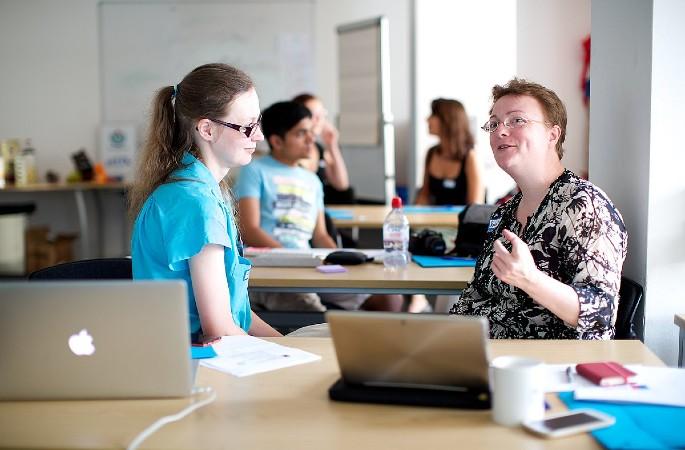Employers and Universities: Work with us?

What is training at work?
Training at work is all about learning new skills which support you in doing your job, in a formal or semi-formal setting.
In this guide, we will answer the question “what is training?” so you know what to expect when you start your first job.
'What is training and what can I expect from training at work?'
What is training?
Most people undertake training at work when they begin a new job. Even if you are very experienced, you will often need to learn how to use an organisation’s IT systems and way of doing things. So training at work is relevant to entry-level employees coming into the workplace straight from school or college, all the way up to the CEO and senior management.
What is training like?
The nature of training depends on the workplace and the task or skill you are learning. For example, you may receive learn one-to-one training with a colleague who sits with you at your desk, or you may do it in a classroom setting room with other trainees.
In this second scenario, training at work is often like learning in a classroom – an IT or computer science lesson, for example. If you are learning to use an IT system, you may be shown around the software before being set some example tasks to have a go at yourself in order to consolidate the knowledge.
If you have a more practical job, working in a lab, healthcare setting, practising a trade or working with people, you will probably learn by observation and explanation before moving onto practice. For example, if you are learning the skill of bricklaying, you may learn the ideas and principles in the office before watching a more experienced colleague then having a go yourself under supervision. If you work in customer service, you may shadow other colleagues before making a start yourself as a colleague sits with you.
Who carries out the training?

group
Training at work may be carried out by a number of people:
- A more experienced colleague.
- An IT or human resources (HR) specialist.
- An internal training specialist.
- An external trainer.
Many trainings are carried out online via interactive platforms, so you won’t necessarily interact with other people while doing these. These platforms may be made up of videos, interactive tasks and text to read, and may include quizzes and tests.
Training and apprenticeships
Apprenticeships and school/college leaver programmes have an amount of training built into them alongside workplace experience. You will spend some time in the classroom or other learning setting in order to develop knowledge and theory to back up your day-to-day work. You will also be supported and supervised to develop skills as you carry out your job. You will gain professional qualifications to demonstrate your experience, skills and knowledge.
Training yourself
You can get ahead by training yourself in many of the skills you think you will need in the area of work you’d like to go into. You can find many courses and skills development platforms online for free.
For example, if you’d like to go into computer programming or software engineering you could use Codecademy or a similar platform to learn how to code in popular programming languages. Or if you want to go into digital marketing, you could learn how to use social media scheduling software such as Buffer, Hootsuite, Tweetdeck or Facebook Business Suite. You can also use sites like Coursera to pick up new knowledge and skills.
To find out more about learning skills at work, visit our employability skills section.
Images: Lead image and trainer image via Wikimedia Commons
